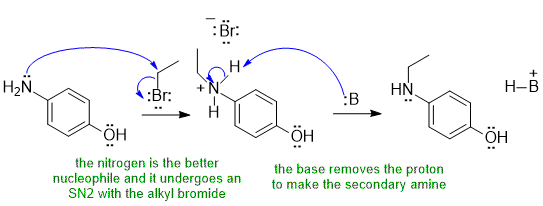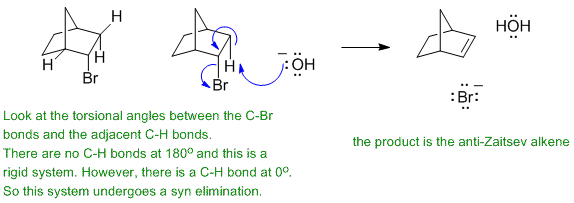
Part 7: MECHANISMS
Note that no other reagents are needed in order to complete any
of these sequences, you should only be using what is there.
Common errors:
General:
i. Drawing curly arrows that were backwards... always electron rich to electron poor. ALWAYS! Or worse, not drawing arrows for some steps.
ii. Not balancing charges in each mechanistic step.
iii. Not providing justifications for the questions that asked for them.
iv. Compressing several reactions steps in to one step and therefore omitting / ignoring important intermediates.
v. Adding reagents not given in the question and therefore not needed and hence answering a different question!
Specific:
A: Not protonating first to make a better leaving group, show unstable carbocations from unfavourable SN1 reactions.
B: Not identifying the nucleophile correctly.
C: Ignoring the stereochemistry of the E2 pathway (i.e. H-C and C-LG bonds needs to be at 180 or 0 degrees), predicting the Zaitsev product, showing an E1 pathway via a carbocation, showing a substitution reaction despite the "classic" alkyl halide elimination reaction conditions (i.e. strong base / heat).
D: Incorrect alkene product, invoking stereochemical issues as if the reaction is E2, missing the C+ rearrangement step, showing an E2 type pathway, showing incorrect alkene stereochemistry.
A Ethers react with strong acids like alcohols... need to make the O atom into a better leaving group by protonating before the nucleophile attacks or the leaving group leaves. Since neither side gives a stable carbocation, the reaction has to be SN2 and not SN1. Aryl systems don't undergo SN reactions, so it's the alkyl side that reacts with the iodide to give the ethyl iodide product.

B Primary alkyl bromides undergo substitution via a SN2 pathway, we need to consider which is the better nucleophile, O or N ? Neutral N is a better nucleophile than neutral O because N is less electronegative. Sodium carbonate is a weak base and is not strong enough to deprotonate the amine or the phenol in the starting material, but it can deprotonate an ammonium ion.

In this scheme, the base B: is most likely the carbonate ion, CO32-
C Alkyl halides undergo elimination via an E2 pathyway when heated with a strong base:

D Alcohols undergo elimination via an E1 pathyway when heated with a strong acid:

In this scheme, the base B: could be HSO4-, H2O or the alcohol itself